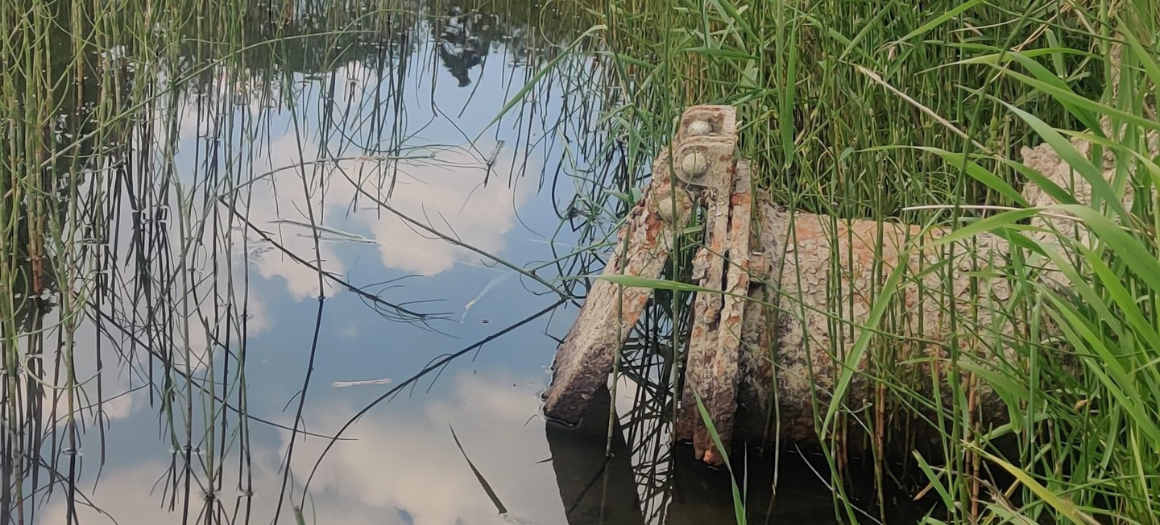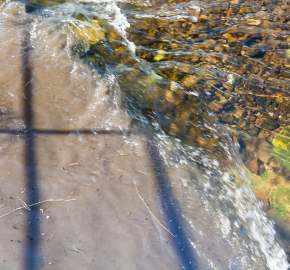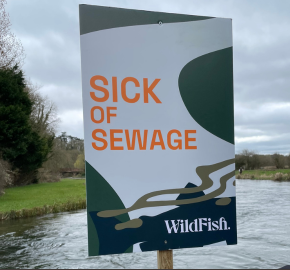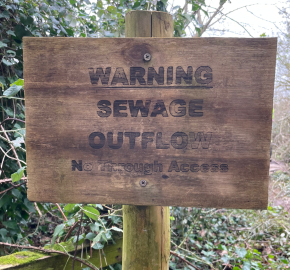How events unfolded in the Cunsey Beck pollution cover-up

Hundreds of fish, including Atlantic salmon, were killed on the Cunsey Beck following a pollution incident on 21 June 2022. In collaboration with Save Windermere, we reviewed the Environment Agency’s (EA) handling of the investigation into the fish kill whilst also trying to identify the source of the pollution.
Following BBC Panorama’s The Water Pollution Cover Up, James Overington, our water policy officer, takes up the story of events as they unfolded with an account of the difficulties faced in seeking to obtain the truth about what happened.
The pollution incident
Cunsey Beck is a small river in the Lake District that flows into Lake Windermere. It is designated as a Special Site of Scientific Interest (SSSI), meaning it is afforded added legal protection. On 21 June 2022, several witnesses observed dead fish on Cunsey Beck and a grey, smelly pollutant in the water. This was reported to the EA by the landowner who identified Near Sawrey wastewater treatment works (the works) – owned by United Utilities – as the likely source of the pollution incident. One dead fish was found upstream of the works whereas hundreds were found below its discharge pipe.
The Environment Agency’s immediate response
Three hours after the incident was reported, the EA arrived on the scene. The attending EA officer took one water quality sample upstream of the works. The officer failed to take any water quality samples or algal samples downstream of the works, nor were any fish taken for autopsy. On the following day, the EA collected a water quality sample downstream of the works. To compare, the upstream sample was taken less than 50m from the works, whereas the downstream samples were taken over 1km away.
The Environment Agency’s biological investigation
Two days after the incident, the EA conducted a biological investigation. The investigation was based on three invertebrate samples collected from sites across Cunsey Beck. The invertebrate sample sites were taken in similar locations to where the water quality samples were taken. Thus, again, no samples were taken within 1km downstream of the works. That said, the biological investigation concluded that the closest downstream site to the works was the ‘most heavily impacted’ with the ‘presence of many dead lumbricid worms’.
Early contact with the Environment Agency
WildFish and Save Windermere met with the local EA in November 2022 and February 2023 to discuss the Cunsey Beck incident. Though the EA were unable to provide any detail, it did confirm that its final investigatory report would be shared as soon as possible. By March 23 2023 no report had been published which prompted WildFish to submit a request for information to the EA.
WildFish submit Environmental Information Regulations request
WildFish can request information from the EA, subject to Environmental Information Regulations (EIR) (2004). Under these regulations, the EA is obligated to provide WildFish with the information within 40 working days if an extension is applied. The EA failed to provide the information within this legal time frame. Instead, the information was provided in two instalments, the first, 65 working days after the request was submitted, and the second, 172 working days after.
The Environment Agency’s final investigatory report
In May 2023, the EA’s final investigatory report was leaked to Save Windermere and then to WildFish. The EA’s final report concluded that it had found ‘no evidence that linked United Utilities assets to the incident’ and that the most likely cause of the incident was an algal bloom. Only one witness statement was included in the report and it belonged to an EA staff member.
What did WildFish’s EIR request uncover?
- The EA never obtained crucial monitoring data for the works from United Utilities
- The EA never obtained crucial monitoring data from the Freshwater Biological Association
- The EA modified the results from its biological investigation when including it in its final report
- The only algal sample collected by the EA was left on a windowsill for several days.
- United Utilities were at the works when the EA attended the incident which impacted the EA’s ability to carry out its investigation.
- The EA had its investigation reviewed by the Scottish Environmental Protection Agency (SEPA) who concluded that there was not enough evidence to conclude an algal bloom caused the fish kill nor was there enough evidence to rule United Utilities’ assets out of the investigation.
WildFish monitoring on Cunsey Beck
In Spring and Autumn 2023, WildFish’s invertebrate monitoring programme (SmartRivers) gathered water quality data above and below the works on Cunsey Beck. SmartRivers identified that pollution-sensitive species dropped by 79% directly below the work compared with directly above. In addition, the monitoring site below the works had the lowest total number of invertebrates present.
Conclusion
The EA’s handling of the Cunsey Beck investigation lacked sound, scientific reasoning. The EA’s final investigatory report is highly inadequate and misleading. From the day of the incident onwards, the EA has consistently failed to execute its duty properly and has instead been transfixed on finding evidence to suggest the incident was caused by a natural, non-prosecutable source.
WildFish is concerned, particularly given the recent Panorama episode The Water Pollution Cover-up, that this is business as usual for the EA and United Utilities. In the Windermere catchment, the EA needs to radically improve how it responds to pollution events. The EA’s response to the Cunsey Beck fish kill on the 21 June needs to be reviewed internally, to identify the errors made, and ensure they aren’t repeated.
WildFish’s recommendations
WildFish recommend that:
- The Environment Agency should review and update all environmental permits that have been issued for United Utilities’ assets in the Windermere catchment, by December 31 2024. Permits should be updated to adequately protect receiving waters and local ecology. Permits should provide elevated protection to receiving waters that have been granted legal protection or receiving waters that flow into a legally protected waterbody.
- The Environment Agency and United Utilities must be more open and transparent with their data to begin restoring public trust. Both organisations must abide by their duty to provide information within set time limits under Environmental Information Regulations 2004. We request that United Utilities publishes a map showing ‘near real-time’ storm discharge activity – to help public avoid coming into contact with untreated sewage – before June 30 2024.
- Our review has highlighted the need for high quality, independent data collection on rivers in the Windermere catchment. Independent evidence of the impact United Utilities’ assets are having on river ecology will be vital to hold it to account when its assets are involved in a pollution incident.




